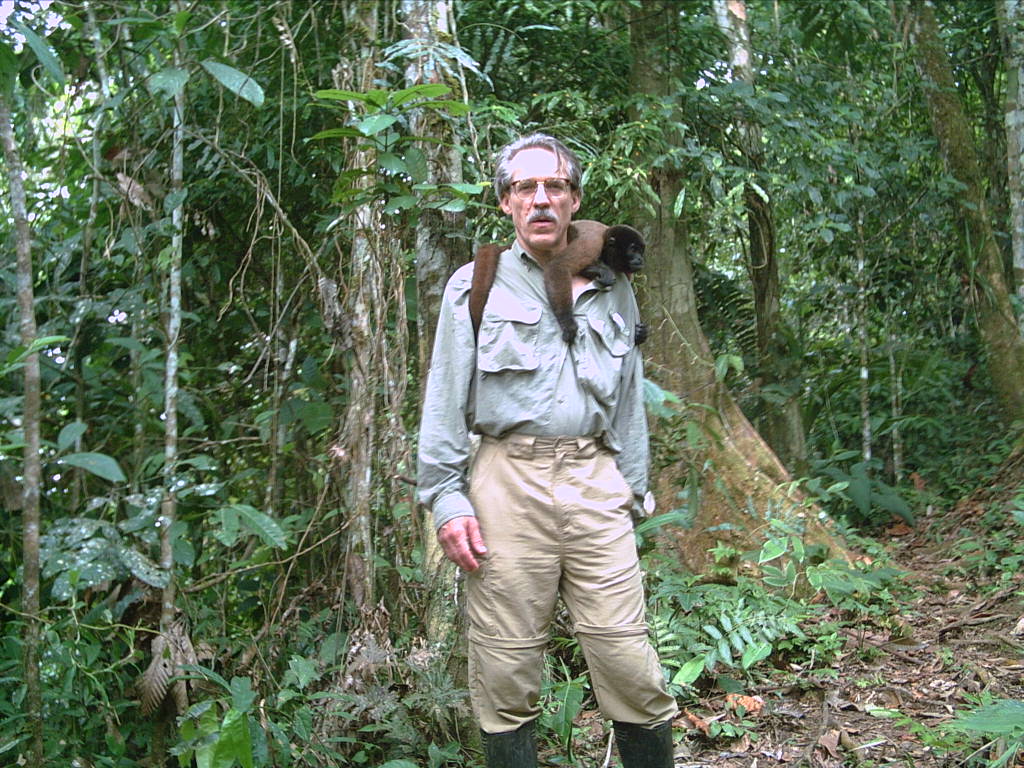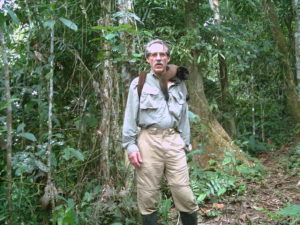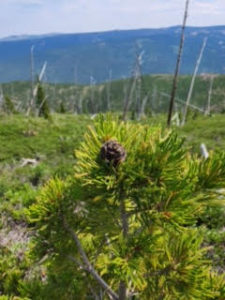
John Van Gundy, Citizen Scientist & Philanthropist
John Van Gundy leads a full and fascinating life as a conservationist, citizen scientist and philanthropist. On any given day, you may find him rowing the Arkansas River to raise money for charity, bushwhacking through the Ecuadorian rain forest, or scouring the remote mountain sides of Oregon in search of whitebark pine. Van Gundy also sponsors a WPEF student research grant focused on whitebark pine dynamics under climate change. We reached out to learn more about his background and interest in funding research on high-five pines.
Early roots as a conservationist
Although born and raised in the cornhusker state, John Van Gundy references a homegrown reverence for forests. “I’m a native Nebraskan, and Nebraskans love trees,” he says. In fact, the first Arbor Day celebration was held in Nebraska in 1872 and the state is home to the Nebraska National Forest at Halsey, which is the largest human-made forest in the U.S.
For Van Gundy, his appreciation for forestry was further cultivated during boy scout troop campouts on a large tree farm outside of Lincoln. He went on to study science and English as an undergraduate at the University of Nebraska, followed by graduate work at the University of Iowa. He also worked a summer stint in the Strawberry Mountains on the Malheur National Forest in eastern Oregon between semesters in college.
A philanthropist by nature

John Van Gundy in the rain forest of Ecuador where he works on reforestation projects
After schooling, Van Gundy combined his interest in science and writing into a nonprofit professional career with an exploration geophysics society headquartered in Oklahoma. He also immersed himself in the Tulsa philanthropic scene in support of community projects with organizations such as Catholic Charities and Downtown Lions Club.
In 2007, Van Gundy had the opportunity to found the Arajuno Foundation, a nonprofit that funds projects in the Upper Amazon River Basin of Ecuador in collaboration with indigenous Kichwa communities, and serves as board president. Together, they are reforesting the local rain forest to provide important food sources, stabilize erosion along the river bank, and protect breeding habitat for the vulnerable yellow-spotted Amazon River turtle.
Work as a whitebark pine citizen scientist
Van Gundy has since returned to the summer of his youth and currently lives one mile from the northern boundary of the Strawberry Mountain Wilderness. It was here that he further became interested in the plight of whitebark pine when working with U.S. Forest Service entomologists on a verbenone research study to protect the tree from mountain pine beetle attacks.
Now semi-retired, he has continued surveying whitebark pine in the area as an independent citizen scientist with team members Mike Bohannon, botanist on the Malheur National Forest, and Katie Nicolato, UAV geospatial analyst for the Davey Resource Group. The group conducts ground and drone-assisted surveys to map populations and monitor post-fire regeneration.
Climate change at forefront of research questions
Van Gundy’s interest in studying whitebark pine is steeped in poetic explanation. “Whitebark pine is a sublime tree species, almost geologic in lifetime. When you extract a core from a dead whitebark pine, it’s tantamount to opening a book on centuries of weather and fire history.” He continues, “Time telescopes in a tree. I would think it’s a dendrochronologist’s dream.”

A young cone-producing whitebark pine found in the High Robert’s fire area (Image credit: John Van Gundy)
He emphasizes that climate change should be at the forefront of any scientific research questions. “Climate change takes precedence over all other worldly considerations — trees and forests being just one of many measurements of the impact on the future,” he comments. For example, the team discovered very young, cone-producing whitebark pine trees in a post-burn area last season. He hypothesizes this may be due to a climate change-induced epigenetic effect with heat and drought causing premature cone production.
Van Gundy has funded five years of whitebark pine student research grants (i.e., five needles, five years) focused on climate change, which has supported several projects examining the role of carbon allocation in response to stress conditions. You can read more about Van Gundy and his team’s research in the latest issue of Nutcracker Notes (available now for members) and the December 2021 issue. Team member Katie Nicolato also will be presenting a WPEF webinar on their work in May 2023.

